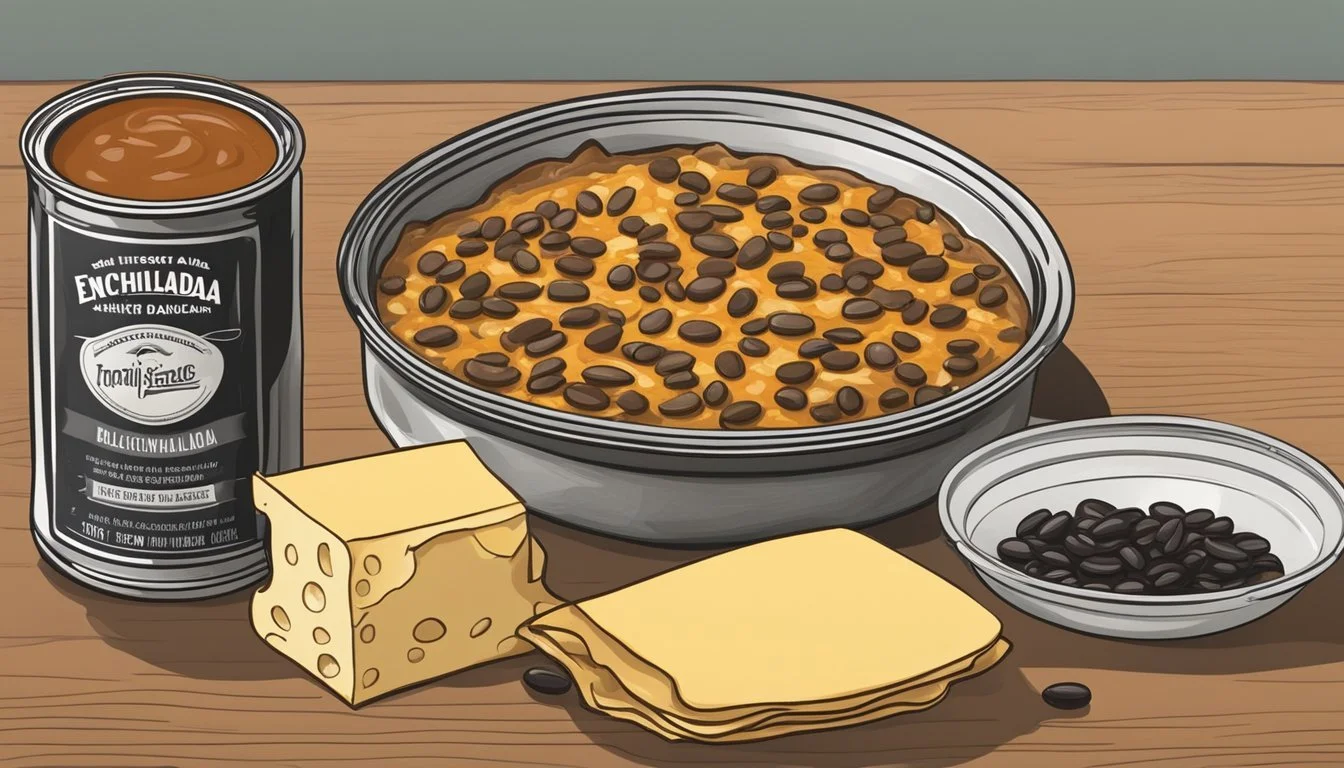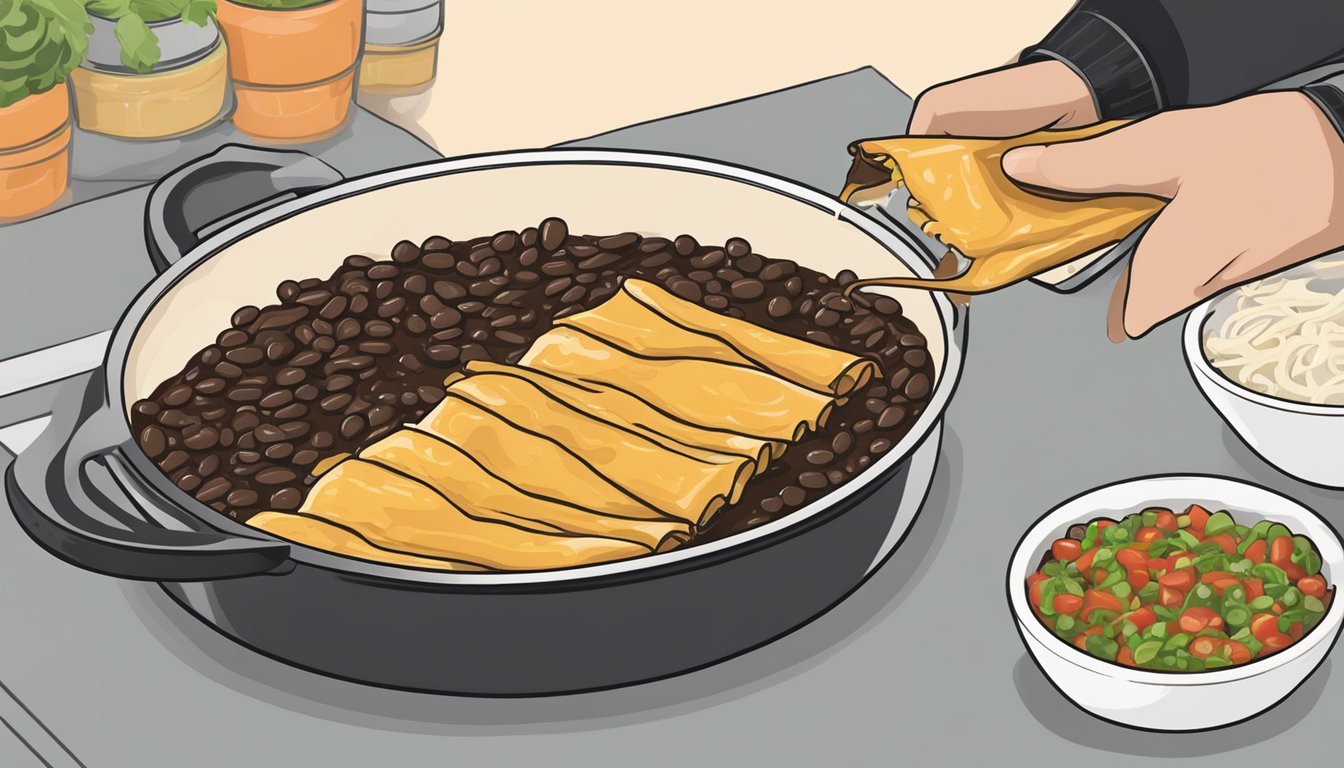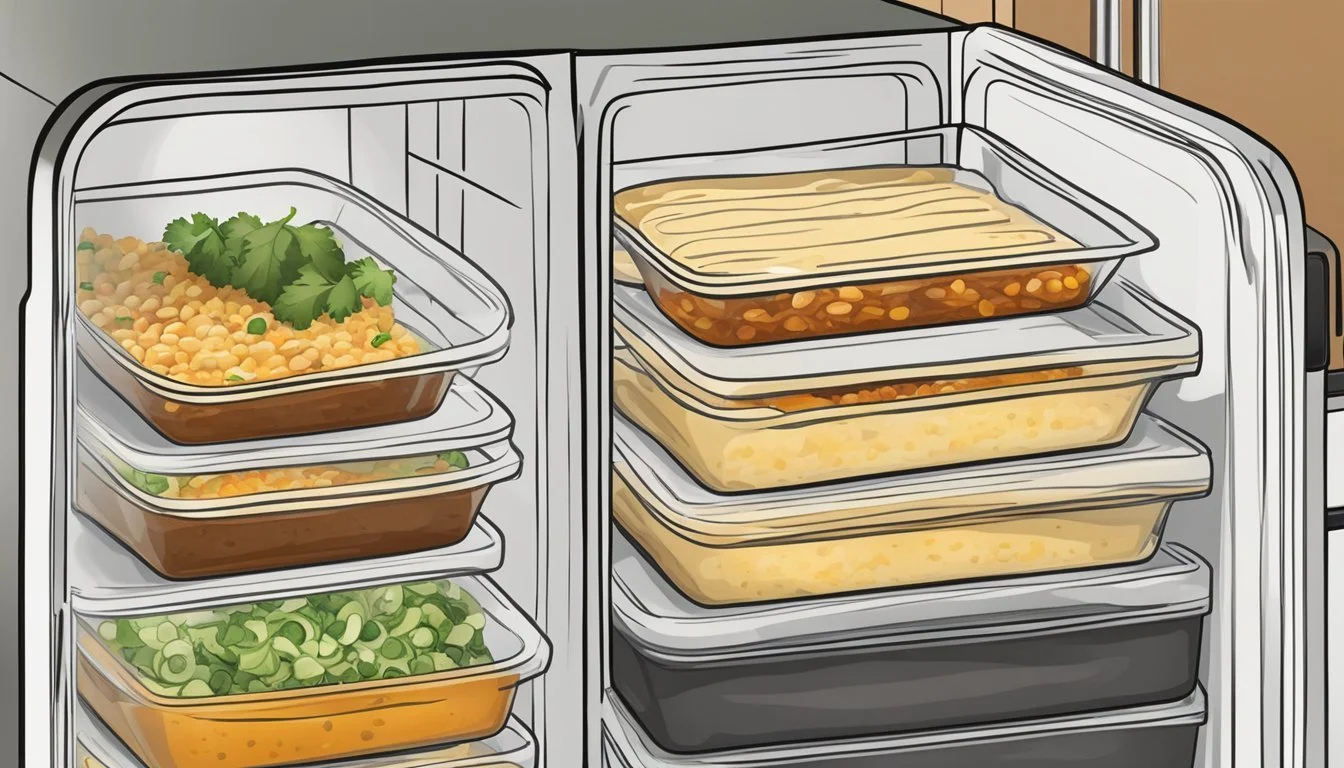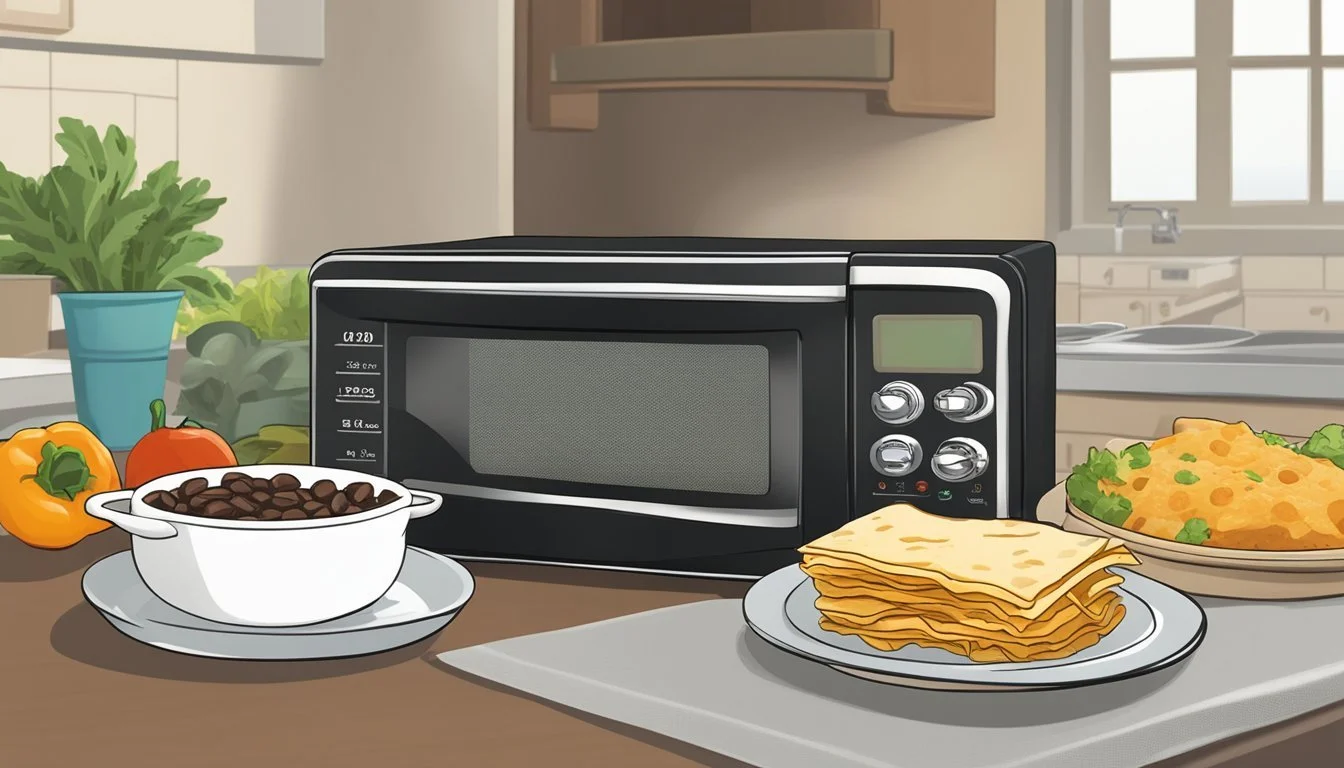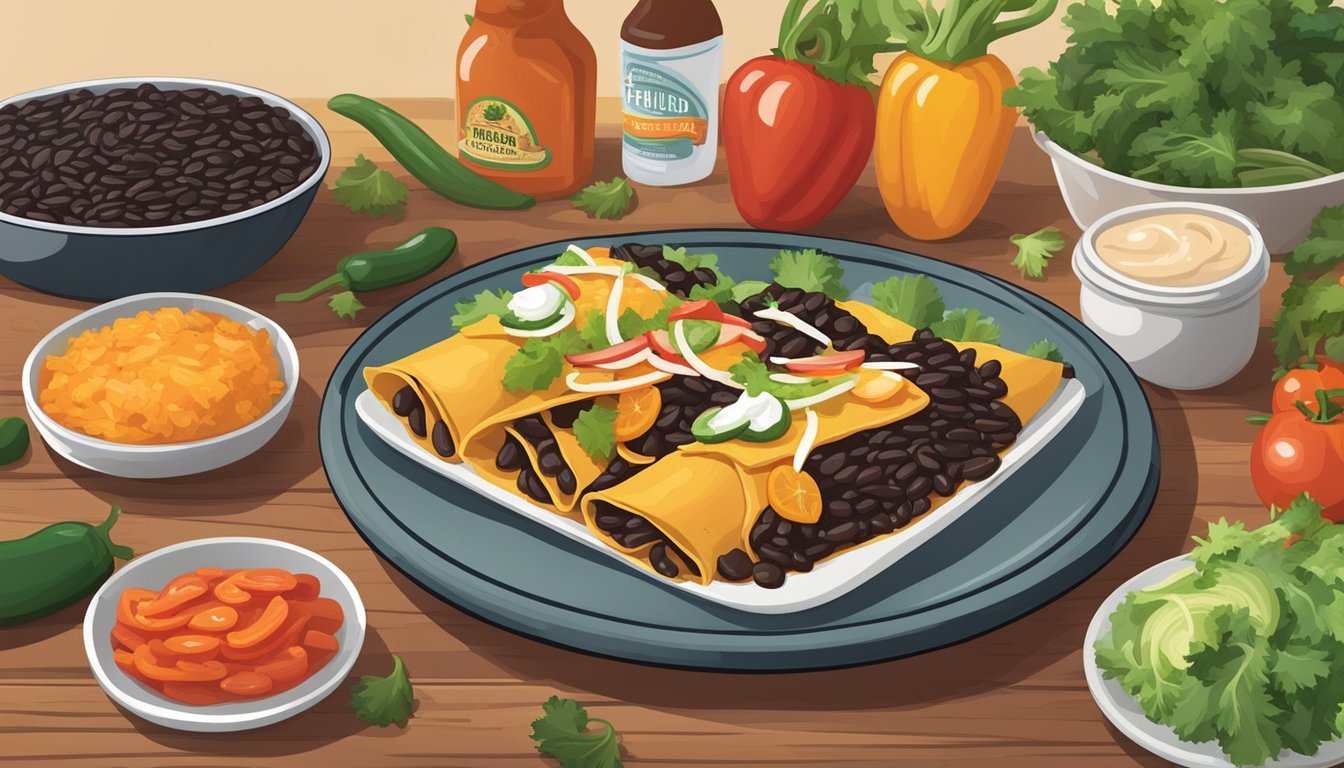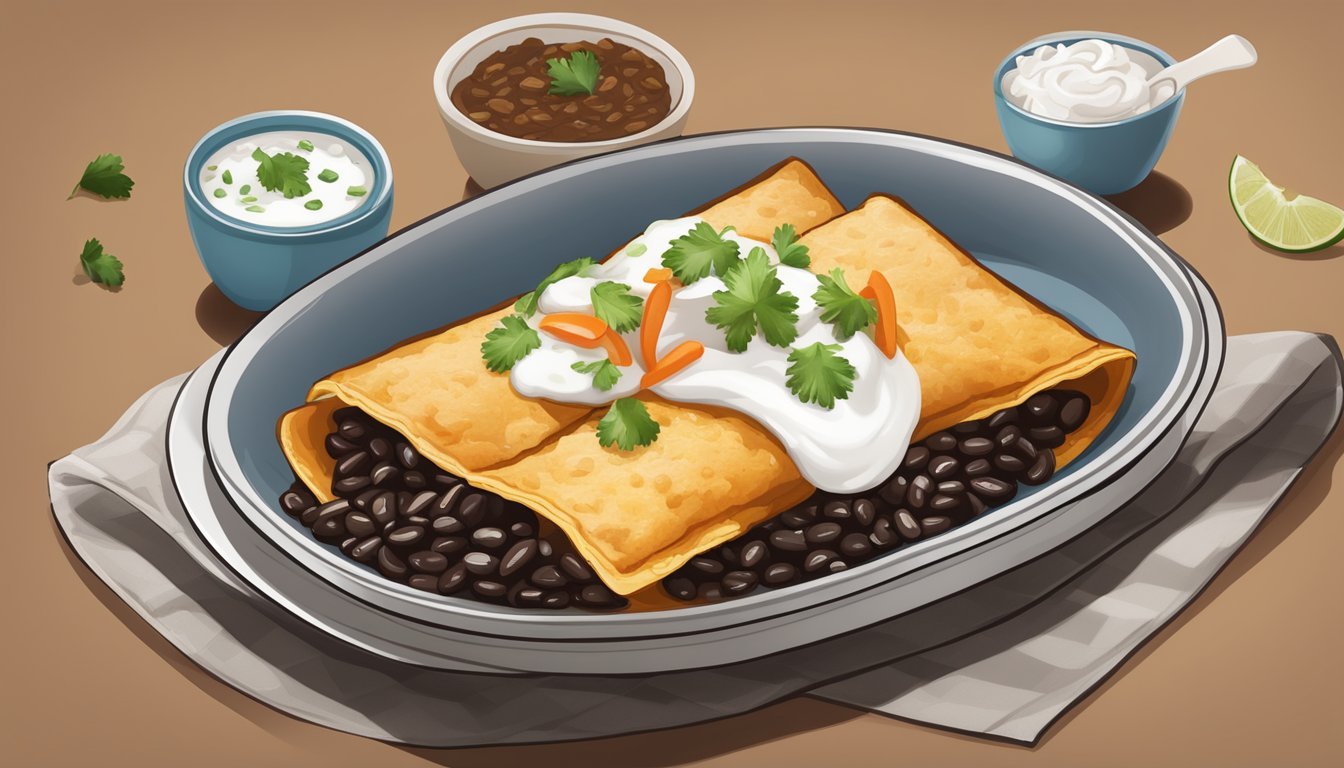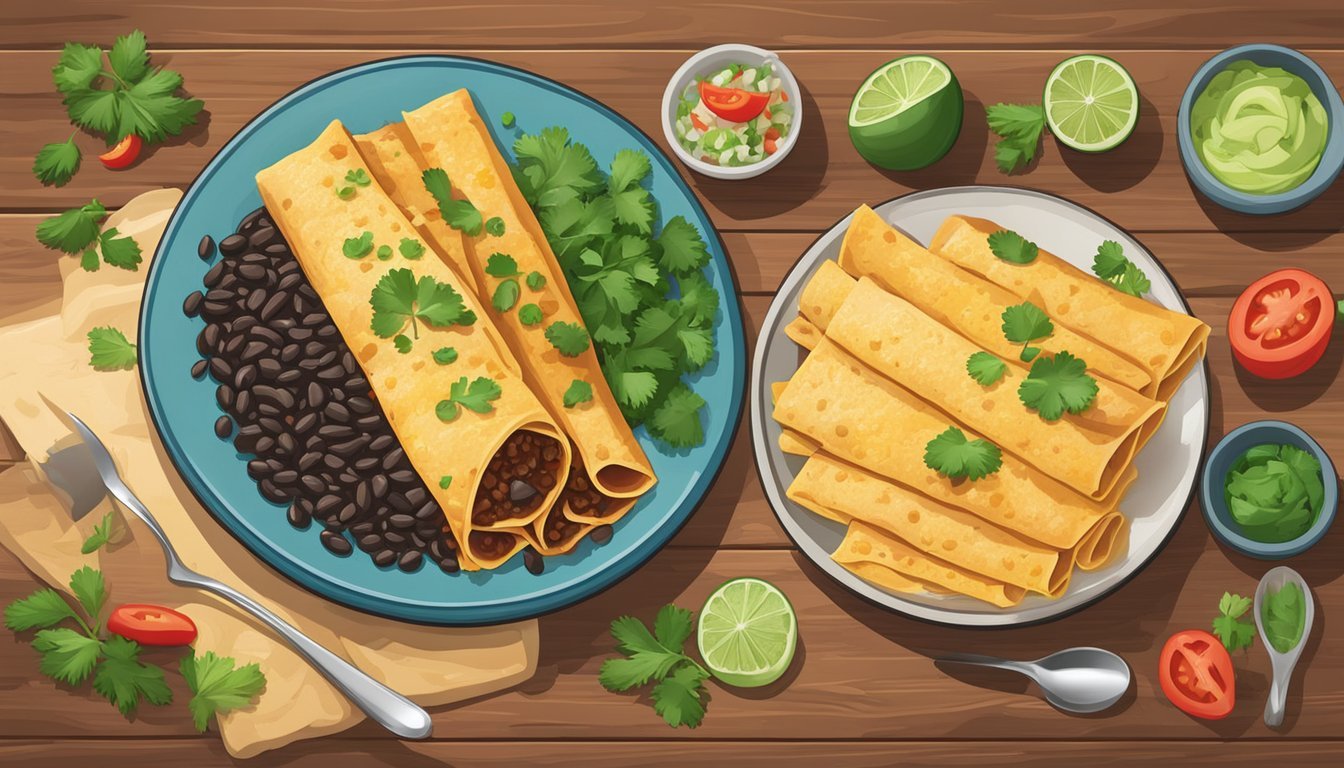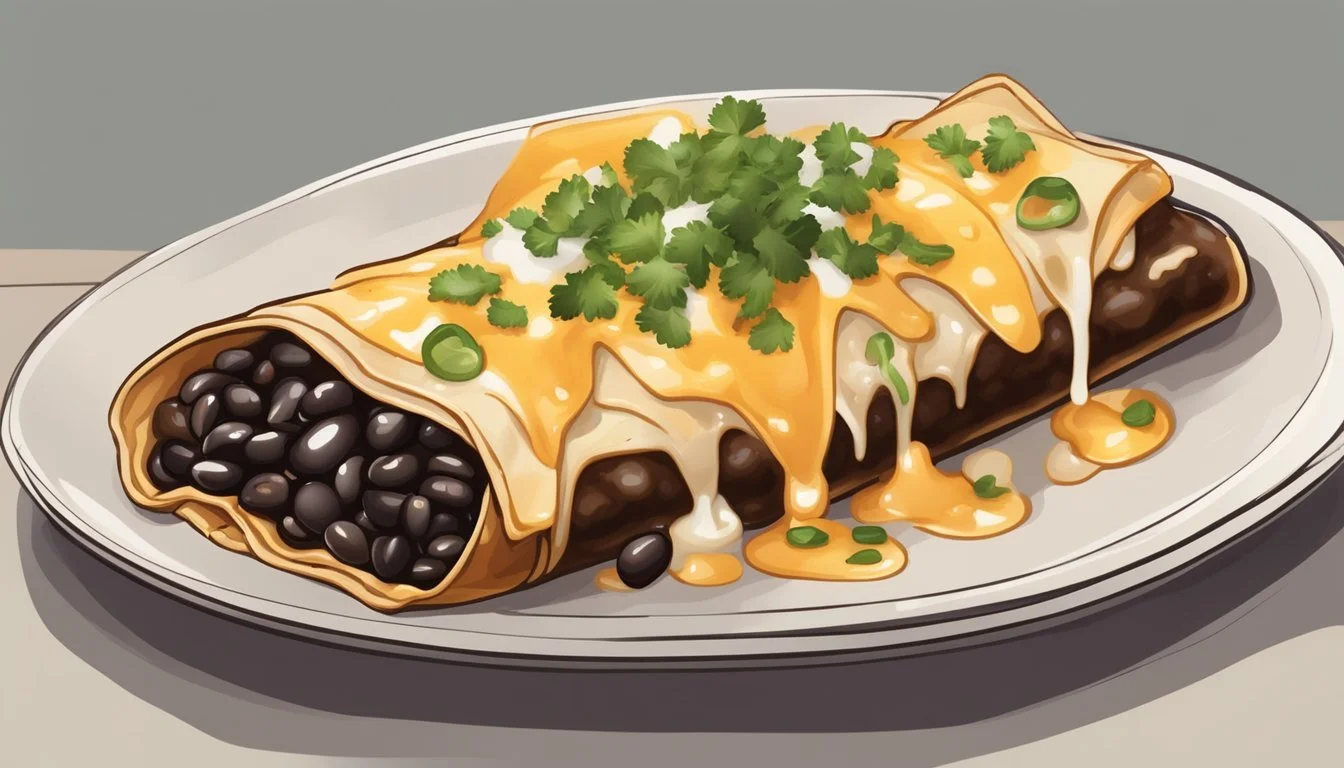How Long Do Black Bean Enchiladas Last?
Shelf Life and Storage Tips
Black bean enchiladas, a delightful blend of hearty ingredients like black beans, corn, and a variety of spices, are not only easy to prepare but also offer impressive nutritional benefits. Rich in protein, fiber, and essential vitamins, they make for a satisfying and wholesome meal. Yet, a common concern among many is how long these delicious enchiladas can last when stored properly.
When refrigerated, black bean enchiladas can last for about 3-4 days. This allows you to prepare them in advance, ensuring you have a ready-to-eat meal during the week. To extend their lifespan further, consider freezing them. Properly stored in the freezer, black bean enchiladas can last for up to 2-3 months without compromising much on taste and quality.
It’s important to store the enchiladas correctly to maximize their shelf life. Place them in an airtight container to prevent them from drying out or absorbing other fridge odors. Reheating can be done in a microwave or oven, ensuring they are heated thoroughly to maintain their delicious flavor and nutritional value.
Ingredients and Substitutions
Choosing the right ingredients and knowing their possible substitutes is crucial for making delicious black bean enchiladas. Each component, from the main filling to the garnishes, contributes to the overall flavor and texture of the dish.
Black Beans as Main Ingredient
Black beans serve as a protein-rich and fiber-packed base for enchiladas. They not only add a hearty texture but also complement the spices and other ingredients well. Canned black beans are convenient, while cooking dried black beans can offer a fresher taste. Substitutes for black beans include pinto beans, kidney beans, or chickpeas, which are equally nutritious.
Vegetable Add-Ins
Vegetables enhance the flavor and nutritional value. Popular choices are onions, garlic, corn, bell peppers, and spinach. Onions and garlic provide a savory base, while corn adds sweetness. Bell peppers bring a crunch and color, and spinach offers an extra boost of vitamins. Zucchini, mushrooms, or shredded carrots can also replace these veggies depending on personal preferences.
Cheese Variety and Substitutes
Cheese adds creaminess and richness. Shredded cheese like jack cheese or cheddar cheese melts well and is typically used. For a different flavor profile, queso fresco or cotija cheese can be sprinkled on top. Vegan cheese substitutes such as those made from cashews or soy are excellent for dairy-free enchiladas. Each type of cheese can slightly alter the taste and texture of the dish.
Wrap Alternatives
Traditional enchiladas use corn tortillas, which provide an authentic taste and are naturally gluten-free. Flour tortillas are a soft and flexible alternative. For those with dietary restrictions, gluten-free tortillas made from rice flour or other grains are available. The choice of wrap can affect the texture significantly, so it is essential to pick based on personal preference and dietary needs.
Enchilada Sauce Options
Enchilada sauce binds the flavors together. Red enchilada sauce is most common and can be made with tomato sauce and spices. Salsa verde offers a tangy twist for those seeking variety. Homemade versions allow for better control over ingredients, but store-bought sauces offer convenience. Each sauce type can impart a unique flavor profile to the enchiladas.
Toppings and Garnishes
Toppings add freshness and enhance the presentation. Popular choices include sour cream, avocado slices, chopped cilantro, and sliced green onions. Crumbled queso fresco or guacamole can provide a creamy contrast. Adding a squeeze of lime juice, spoonful of salsa or pico de gallo can brighten the flavors. Each garnish offers a final touch, making the dish not only delicious but visually appealing.
Preparation Steps
Creating black bean enchiladas involves preparing the filling mixture, assembling the enchiladas, baking them to perfection, and adding some finishing touches for added flavor and presentation.
Filling Mixture
Start by heating olive oil in a skillet over medium-high heat. Add minced garlic and cook for about 30 seconds until aromatic. Then, add chopped onions and cook for about 8 minutes until soft and translucent.
Mix in the black beans, corn, cumin, oregano, sea salt, and black pepper. Stir well, ensuring all ingredients are evenly combined. Let the mixture simmer for a few minutes, allowing the spices to meld with the beans and vegetables, creating a rich and flavorful filling.
Assembly of Enchiladas
Preheat the oven to the required temperature (typically 350°F to 400°F). Pour a thin layer of enchilada sauce into the bottom of the baking dish to prevent sticking.
Take a corn or flour tortilla and dip it into enchilada sauce, coating both sides. Place it on a flat surface, add approximately ¼ cup of the prepared filling mixture, and sprinkle with 1-2 tablespoons of shredded cheese. Roll the tortilla around the filling snugly and place it seam-side down in the baking dish. Repeat with remaining ingredients.
Baking Process
Once all the enchiladas are in the dish, pour the remaining enchilada sauce over the top, ensuring they are thoroughly covered. Sprinkle additional shredded cheese on top according to preference.
Cover the baking dish with foil and bake for about 20 minutes. Remove the foil and bake for an additional 10-15 minutes, or until the cheese is bubbly and slightly browned. The enchiladas should be hot throughout, and the edges should be crispy yet tender.
Finishing Touches
After removing the enchiladas from the oven, let them sit for a few minutes to set. For added flavor and presentation, garnish with chopped fresh cilantro.
Additional toppings like sliced avocado, a dollop of sour cream, or diced tomatoes can also enhance the dish. Serve the enchiladas hot, accompanied by a side of rice or a fresh salad for a complete meal.
Storage Guidelines
Black bean enchiladas can be stored in the refrigerator or freezer to maintain their freshness and quality. Proper storage extends their shelf life and ensures they are safe to consume.
Refrigerating Enchiladas
Refrigerating black bean enchiladas is a convenient way to keep them fresh for short-term use. After cooking, allow the enchiladas to cool to room temperature.
Transfer them to an airtight container or wrap them tightly in foil. If using a baking dish, cover it with foil to prevent exposure to air.
In the refrigerator, black bean enchiladas can last for about 3-5 days. Label the container with the date to keep track of freshness.
When reheating, preheat the oven to 350ºF and heat the enchiladas until they are warmed through, usually about 15-20 minutes.
Freezing for Longevity
For longer storage, freezing black bean enchiladas is an excellent option. First, ensure the enchiladas have cooled completely.
Wrap each enchilada individually in foil for better protection against freezer burn. Alternatively, use a freezer-safe baking dish.
Place the wrapped enchiladas in a freezer bag, removing as much air as possible before sealing. Label the bag with the date.
Frozen black bean enchiladas can last up to 3 months in the freezer. To reheat, thaw them in the refrigerator overnight or bake directly from frozen at 350ºF for about 25-30 minutes.
Using olive oil to lightly grease the baking dish can prevent sticking and help keep the enchiladas moist.
Reheating Methods
To enjoy the deliciousness of leftover black bean enchiladas, it's crucial to reheat them correctly. Choosing the right method can ensure the enchiladas retain their flavor and texture.
Oven Reheating Technique
Preheating the oven to 350°F is a key step to ensure your enchiladas are evenly warmed. Place the enchiladas in an oven-safe baking dish and cover them with aluminum foil to prevent them from drying out. Bake them for 20 minutes, then remove the foil for the last 5 to 10 minutes. This allows the cheese to melt perfectly without becoming crusty.
Microwave Reheating Option
For a quicker reheating option, the microwave is very efficient. Place the enchilada on a microwave-safe plate and cover it with a splatter guard. On high heat, microwave for 2 minutes. If you prefer, poke some holes in the enchilada or cut it into smaller sections to ensure even heating. Check the enchilada; if it's not heated through, microwave for additional 30-second intervals.
Stovetop Warming
Using a frying pan or skillet can help retain and even enhance the enchiladas’ texture. Heat a small amount of oil in the pan on medium-high heat. Place the enchiladas, spaced apart, in the skillet and cook them for 2-4 minutes to crisp up the bottoms. To steam, add a few drops of water around the enchiladas and cover the pan with a lid for another 2 minutes.
Health and Nutrition
Black bean enchiladas are a nutritious choice for many, offering various health benefits due to their high fiber content and rich protein sources. They are suitable for vegetarian diets and can be adjusted for gluten-free needs.
Caloric and Nutrient Content
Black bean enchiladas generally contain around 209 calories per serving. This serving also provides a balanced mix of macronutrients, including 9.3g of total fat, 4.5g of which is saturated fat, 0g of trans fat, along with some polyunsaturated and monounsaturated fats. These enchiladas are a good source of protein, providing around 10g per serving, which supports muscle repair and growth.
In addition to macronutrients, these enchiladas are rich in dietary fiber from black beans, which can help with digestion and maintaining a healthy gut. They also supply essential vitamins and minerals, such as iron, potassium, and magnesium, contributing to overall health and well-being.
Dietary Considerations
For those following a vegetarian diet, black bean enchiladas are an excellent meal choice because they are naturally meat-free yet high in essential nutrients. They are packed with plant-based protein from black beans, making them a satisfying and nourishing option.
Gluten-free adaptations can easily be made by using gluten-free tortillas instead of traditional wheat-based ones. This makes the dish accessible for individuals with celiac disease or gluten sensitivities.
Lastly, those looking to reduce their saturated fat intake can modify the recipe by using low-fat cheese or reducing the amount of cheese used. Including plenty of vegetables, such as bell peppers, onions, and cilantro, can also enhance the nutritional profile of this vegetarian meal.
Vegetarian Enchilada Variations
Vegetarian enchiladas can be customized with a variety of beans, an assortment of veggies, or even without cheese for a different taste experience. Each ingredient can enhance the overall flavor and texture.
Bean Alternatives
While black beans are commonly used, other beans can be excellent substitutes. Pinto beans have a rich, creamy texture that pairs well with typical enchilada spices. Refried beans offer a smooth and hearty filling, often creating a more substantial bite.
Chickpeas can also be used, bringing a slightly nutty flavor and firmer texture. For a quicker option, canned beans are convenient and save time. Just make sure to rinse them well before use to reduce sodium content.
Veggie-Packed Recipes
Vegetarian enchiladas can benefit immensely from a variety of vegetables. Spinach is a great addition, offering a rich source of iron and fiber. It pairs well with cheese and beans, adding a slightly bitter yet light flavor.
Bell peppers provide a crunchy texture and sweetness. Rich in vitamins A and C, they complement the other ingredients well. Sweet potatoes add a hint of sweetness and a smooth texture when cooked. Combining these with avocado slices can create a creamy, rich layer that contrasts well with the crunchy enchiladas.
Cheese-Free Options
For those looking to cut out dairy, there are several cheese-free variations. Vegan cheese made from nuts or soy can be used as a direct substitute for traditional cheese.
Nutritional yeast can be sprinkled on top to give a cheesy flavor without the dairy. This option is rich in B vitamins and often fortified with B12, adding nutritional value. Combining nutritious ingredients can result in delicious, well-rounded enchiladas that suit various dietary needs.
Use bold flavors and a variety of textures to keep cheese-free enchiladas interesting and satisfying.
Serving Suggestions
To enhance black bean enchiladas, consider pairing them with complementary side dishes and garnishes, and explore ways to elevate the overall meal experience with thoughtful touches.
Side Dish Pairings
Cilantro Lime Rice: This vibrant, tangy rice balances the savory flavors of black bean enchiladas. The brightness of lime and freshness of cilantro create an irresistible, complementary dish.
Mexican Rice: A classic staple, Mexican rice adds a mildly spicy and aromatic touch. It complements enchiladas without overpowering them, making it a perfect side.
Refried Beans: To keep the meal hearty, serve with refried beans. Creamy and flavored with spices, they add a rich texture.
Guacamole: Fresh guacamole brings creaminess and a cool contrast. Mash avocados with lime, salt, and cilantro for a simple, effective dip.
Enhancing the Experience
Garnish with Fresh Cilantro: Adding fresh cilantro leaves on top of the enchiladas enhances both appearance and taste. The herb's bright flavor uplifts the dish.
Drizzle with Lime Juice: A light squeeze of lime juice right before serving adds a burst of freshness. The citrus note cuts through the richness of the enchilada sauce.
Serve with Salsa: Offer a side of salsa to give options for added zest and spice. A mix of tomatoes, onions, and chilies in salsa can elevate each bite.
Include Sour Cream: A dollop of sour cream provides a creamy, cool element that balances the spices in the enchiladas.
Presentation: Serve enchiladas hot and garnish with finely chopped green onions and shredded cheese for a visually appealing and delicious dish.
Tips and Tricks
Maximize the shelf life of black bean enchiladas with these essential tips. Discover strategies for enhancing texture, flavor, preparing in advance, and achieving uniform baking results.
Improving Texture and Flavor
To enhance texture and flavor, start by sautéing garlic and onions before adding to the filling. Use olive oil over medium-high heat, cooking garlic for 30 seconds and onions for about 8 minutes until softened.
Incorporating spices like cumin and smoked paprika can elevate the flavor profile. Combining black beans with yellow corn adds a pleasing texture difference. Sprinkling a bit of pepper jack cheese into the mix can give a creamy contrast to the beans.
Making Enchiladas Ahead of Time
For those prepping in advance, you can assemble the enchiladas ahead of time. Prepare the filling with black beans, green chilis, and any desired spices.
Dipping each tortilla in enchilada sauce before filling helps keep them moist. Store the rolled enchiladas in a baking dish, cover them tightly with foil, and refrigerate. They can last 2-3 days in the fridge before baking.
Ensuring Even Baking
Achieving even baking ensures a perfect result. Preheat the oven to the recommended temperature, typically between 350°F and 400°F. Arrange the enchiladas seam-side down in the baking dish to prevent unrolling.
Pour extra enchilada sauce over the top to keep them from drying out. Covering the dish with foil for the initial baking period helps evenly distribute heat and prevents the tops from getting too crispy. Uncover in the last 10 minutes for a perfectly baked, slightly crispy top.
Commonly Asked Questions
Black bean enchiladas are a delicious and versatile meal, but knowing their shelf life, proper storage methods, and nutritional content is crucial for maintaining quality and safety.
Shelf Life of Enchiladas
Black bean enchiladas, when stored correctly, can last 3-5 days in the refrigerator and up to 3 months in the freezer. Using an airtight container is essential to prevent moisture and bacteria. If freezing, it's best to use a baking dish that can transition from freezer to oven. Thaw frozen enchiladas in the refrigerator overnight before reheating. Proper storage helps maintain the enchiladas' flavor and texture.
Safety Measures for Storage
To ensure safety, refrigerate leftovers within two hours of cooking. Use foil or airtight containers to keep the enchiladas fresh. Avoid leaving them at room temperature for too long to prevent bacterial growth. When reheating, make sure the enchiladas reach an internal temperature of 165°F. This temperature ensures any potential bacteria are eliminated.
Nutritional Variation in Ingredients
Black bean enchiladas are nutritious, containing fiber, protein, and essential vitamins. Using black beans and corn adds dietary fiber, which aids digestion. Cheese provides calcium, but moderating its amount can keep calorie intake in check. When possible, use whole-grain tortillas for additional nutrients. Be mindful of the sodium content in enchilada sauce and choose low-sodium options if needed. Adjusting these ingredients can tailor the health benefits to dietary needs.
Conclusion
Black bean enchiladas offer a nutritious and hearty meal that can be stored and reheated for continued enjoyment.
Storage:
Refrigerate enchiladas in an airtight container for up to 3-4 days.
For longer storage, freeze them. They can last up to 2 months in the freezer.
Reheating:
To reheat refrigerated enchiladas, use the oven set to 350°F for about 20 minutes.
For frozen enchiladas, thaw them in the refrigerator overnight and reheat at 350°F for 25-30 minutes.
Nutrition:
Black bean enchiladas are rich in protein and fiber due to their primary ingredient, black beans. They also provide essential vitamins and minerals, particularly when combined with vegetables like corn and peppers.
Properly storing and reheating black bean enchiladas ensures you can enjoy a delicious, nutritious meal any day.


